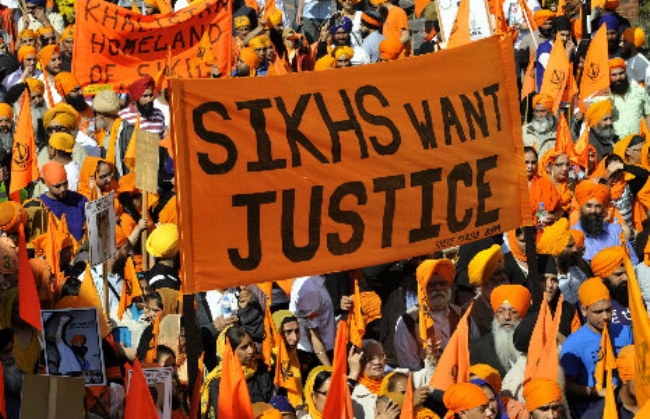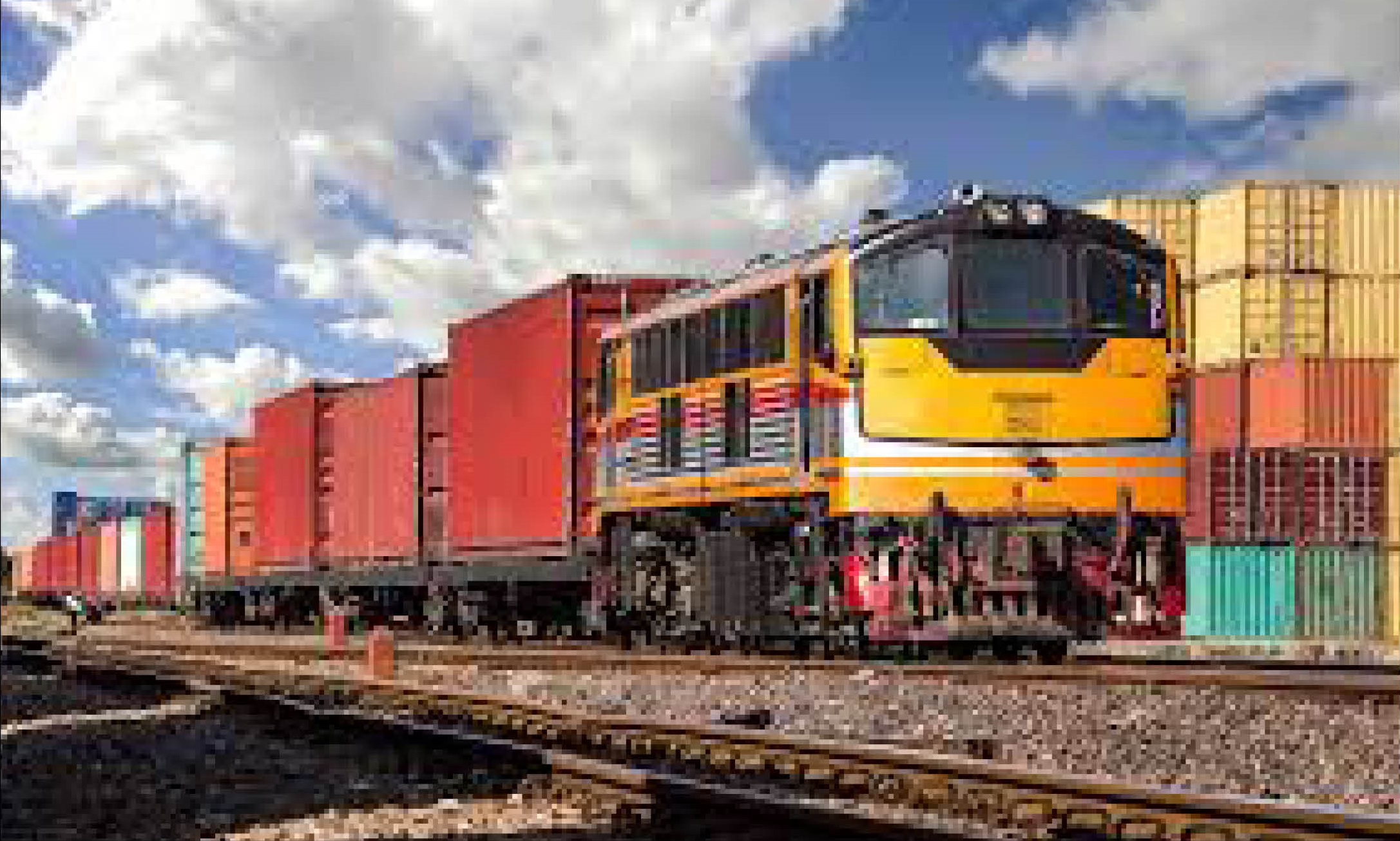A project of the United Nations Economic and Social Commission for Asia and the Pacific (UNESCAP), the Trans-Asian Railway (TAR) Network Agreement was signed on 10 November 2006, by seventeen Asian nations to build a transcontinental railway network between Europe and Pacific ports in China. Planned to cater for enormous increase in international trade between Eurasian nations much of the railway network already exists as part of the Eurasian Land Bridge to create an integrated freight railway network which connect and across Europe and Asia, a continuous 8,750 miles (14,080 km) rail link between Singapore and Istanbul, Turkey. The plan has sometimes been called the “Iron Silk Road” in reference to the historical Silk Road trade routes. Further connections to Europe and Africa. Initiated in the 1950s progress in developing the TAR were hindered by political and economic obstacles till the 1990s improved the prospects for rail network across the Asian continent. Significant gaps include the differences in rail gauge across Eurasia. Four different major rail gauges existing across the continent: most of Europe, as well as Turkey, Iran, China is the big challenge. Gaps also exist between India and Myanmar, between Myanmar and Thailand, between Thailand and Cambodia, between Cambodia and Vietnam and between Thailand and Yunnan. UNESCAP’s Transport & Tourism Division began work on the initiative in 1992 when it launched the Asian Land Transport Infrastructure Development project.
A project of the United Nations Economic and Social Commission for Asia and the Pacific (UNESCAP), the Trans-Asian Railway (TAR) Network Agreement was signed on 10 November 2006, by seventeen Asian nations to build a transcontinental railway network between Europe and Pacific ports in China. Planned to cater for enormous increase in international trade between Eurasian nations much of the railway network already exists as part of the Eurasian Land Bridge to create an integrated freight railway network which connect and across Europe and Asia, a continuous 8,750 miles (14,080 km) rail link between Singapore and Istanbul, Turkey. The plan has sometimes been called the “Iron Silk Road” in reference to the historical Silk Road trade routes. Further connections to Europe and Africa. Initiated in the 1950s progress in developing the TAR were hindered by political and economic obstacles till the 1990s improved the prospects for rail network across the Asian continent. Significant gaps include the differences in rail gauge across Eurasia. Four different major rail gauges existing across the continent: most of Europe, as well as Turkey, Iran, China is the big challenge. Gaps also exist between India and Myanmar, between Myanmar and Thailand, between Thailand and Cambodia, between Cambodia and Vietnam and between Thailand and Yunnan. UNESCAP’s Transport & Tourism Division began work on the initiative in 1992 when it launched the Asian Land Transport Infrastructure Development project.
The railways are quite developed in South Asia, but still do need a lot of modernisation. India Railways has one of the biggest operations in the world with total track of 68155 kms of which 40576 kms (64%) of all the broad gauge is electrification India Railways is connected to Bangladesh Railways and goes through Assam to Myanmar Railways to connect Thailand and through to Malaysia and Singapore. Bangladesh Railways is divided into East and West Zones with a total track of 3600 kms out of which 1225 kms is double track. However only 1575 kms is broad gauge while 2025 kms is metre gauge. Now some Diesel Electric multiple Unit (DEMU) trains are in operation but in meter gauge only. Myanmar, Thailand and Malaysia have extensive railway networks but like in Bangladesh have indifferent quality of service.

With the Belt and Road Initiative (BRI) developing and gaining traction despite the corona pandemic, a centuries old prediction of a Eurasian pivot is coming true. After independence in 1947 India tried to undo Pakistan because Nehru and Congress considered it detrimental to ‘Akhand Bharat’. Pakistan had the foresight to turn to China to resolving bureaucratically created border disputes between the two countries thus founding a lasting friendship and cooperation. This farsighted foreign policy initiative laid the ground work for a much deeper association between China and Pakistan when CPEC was announced in 2013.By this time the Karakoram Highway (KKH), the highest road in the world started in the 60s connecting Sinkiang Province to mainland Pakistan was already a reality for almost 50 years. With Maj (later Maj Gen) HUK Niazi, SJ as the Flight Commander (than) KKH Flight flying an Alouette-3 French helicopter I had a wonderful time supporting the KKH road building project being built by the Chinese.
Declaring Afghanistan as the “Heart of Asia” in his Persian poetry, our revered visionary poet Iqbal very rightly predicted that peace and order of Asian region is directly linked with the latter. Pakistan is closely connected to Afghanistan and shares the geostrategic location and more so, provides access to the warm waters of the Indian Ocean for Afghanistan and the rest of Central Asia, China, Russia and now Europe.
Progressing very well BRI and CPEC is today contributing to making Eurasia a reality. The fact that India has so far chosen to join the anti-China and anti-Eurasia front lead by the US is a serious impediment to the unification of Asia. For decades the South Asian subcontinent that forms a geographical unit while uniting a multitude of ethnic, religious and cultural peoples in it has suffered economic, political and human impediments because of India’s obstinacy and insistence to be the leader and shaker in the region with all others playing a secondary role only if at all. The last couple of years under the Modi regime have shown that insisting on a senseless policy can destroy an economy much faster than to build it up. Apart from the deteriorating situation within India, given the anti-Muslim policy, the single-handed grabbing of Kashmir, the ongoing peasant protests, which is rapidly morphing into a Sikh movement, against a senseless agricultural policy and multiple other problems India’s obstinacy has isolated it foreign policy-wise in the region and beyond.
Trying to isolate Pakistan, India now has serious border disputes with Nepal, Bhutan and Bangladesh. Land-locked Nepal is really “India-locked” because it borders India to the east, west, and south. Utilizing this geographical advantage, India has imposed three periodic trade blockades in 1975, 1989, and 2015, creating huge anti-India sentiment among Nepalis. The crippling blockade of 2015 imposed by India was barely a month after a powerful earthquake decimated the country, Nepal therefore signed a historic trade and transit agreement with its northern neighbour, China. Nepal and India’s roughly 1,800-kilometer-long border is open. But this is not without tension with Indian security forces encroaching onto Nepali lands and killing Nepali citizens. Nepali migrant workers returning from India are regularly extorted by Indian border guards.
China’s influence in the mountain kingdom of Bhutan is rising because of the public discontent with India’s approach.
“India is financing the hydropower projects unfavorable to Bhutan, is getting electricity from Bhutan at cheap rates,” a Bhutanese official pointed out. Further, despite an updated treaty, India continues pressurize Bhutan to dominate its foreign relations to such an extent that Bhutan, to this day, does not engage in diplomatic talks with China. Much of the Bhutanese population considers this as a direct threat to the sovereign character of the country and also a major hindrance to settling the border between Bhutan and China.
Relations between India and Bangladesh are on edge with long-standing border and water issues amended by the recent threat of India to send back almost 2 million Muslim Bengalis residing for many decades on the Indian side of the border in Assam by declaring them non-Indian and alien. The real tragedy is that till the 16th century the area comprising what is now Bangladesh, West Bengal, Assam, Nagaland, Meghalaya, etc provided 70% of Mughal India’s 27% of world trade.

Finding fault with almost all its neighbours including China and throwing its foreign policy weight with the US, Australia and Japan none of who have a real interest in the region India is strangling itself as well as denying South Asia and by extension South East Asia the benefits that BRI and CPEC would provide. Going through India to Myanmar and through BD to Southeast Asia would seriously cut down on distances. In addition, trade flowing through those routes would create tremendous transit income. By opening the borders for trade even more economic gain would be possible. British historian Angus Maddison calculated at the beginning of the 18th century that before the British systematically destroyed Bengal’s textile industry which at that time provided 25% of the world’s textile exports to East Asia, China, Africa and Europe. Mughal India’s share of the world economy was 23% larger than all Europe put together.
Trying to be a regional power on its way to be a global one India is turning a blind eye to the fact that while Eurasia is a reality mainly because of BRI the time of world leaders, global or even regional powers dominating others is vanishing and a multipolar world is in the making. The fact of the matter is that Eurasia is the gateway for South Asia and to some extent South East Asia, that door can only be unlocked if India ceases its belligerence towards Pakistan both overt and covert. At this time India’s ambitions and animosity are holding the land-locked entire east west trade hostage. The way towards multipolarity and Eurasia is inexorable and the sooner this fact is realized by India the better for them and all the region. CPEC makes Pakistan an integral part of the BRI process, only a change of Indian mindset to join the CPEC bandwagon will force-multiply economic progress in the region and adjacent lands.




